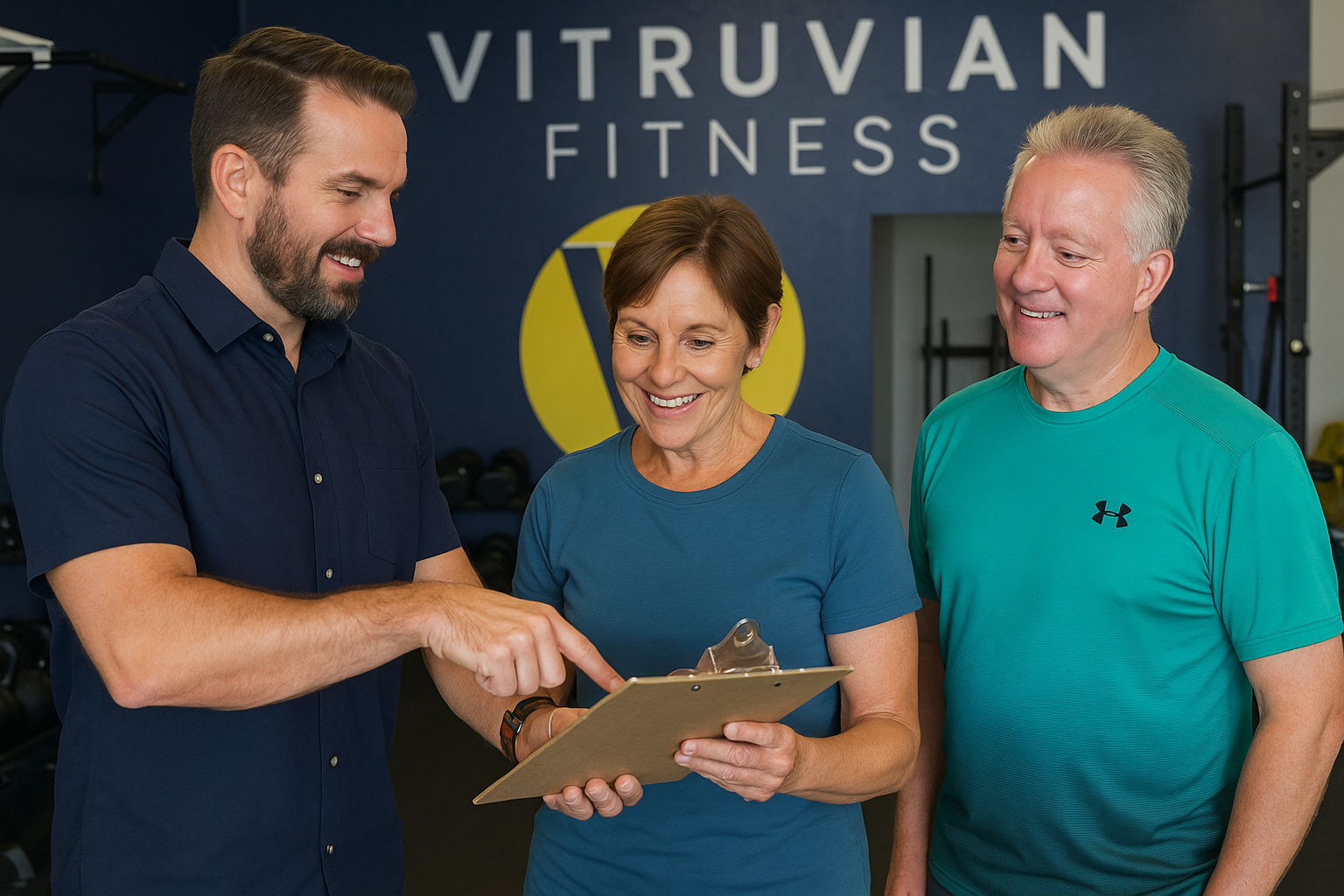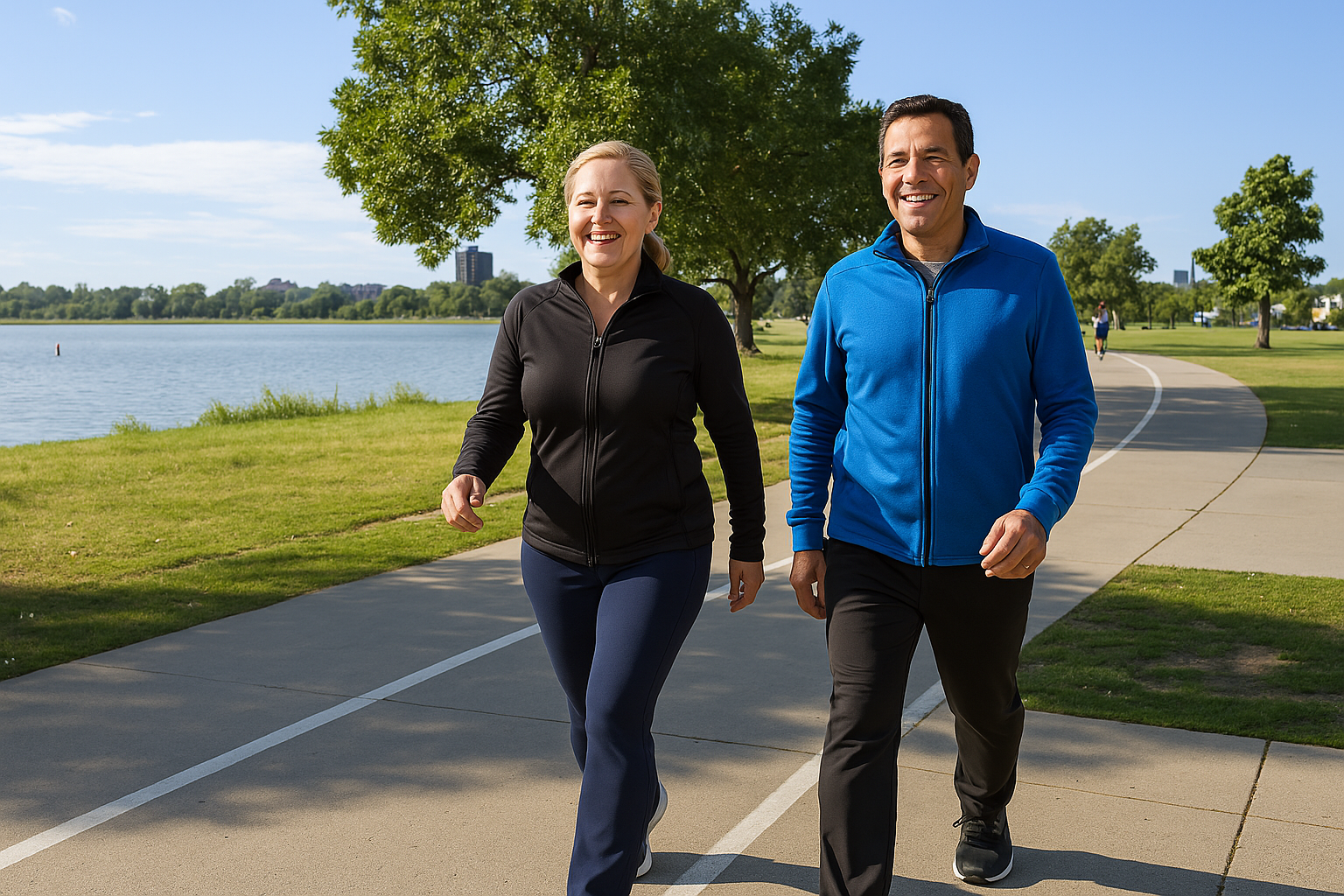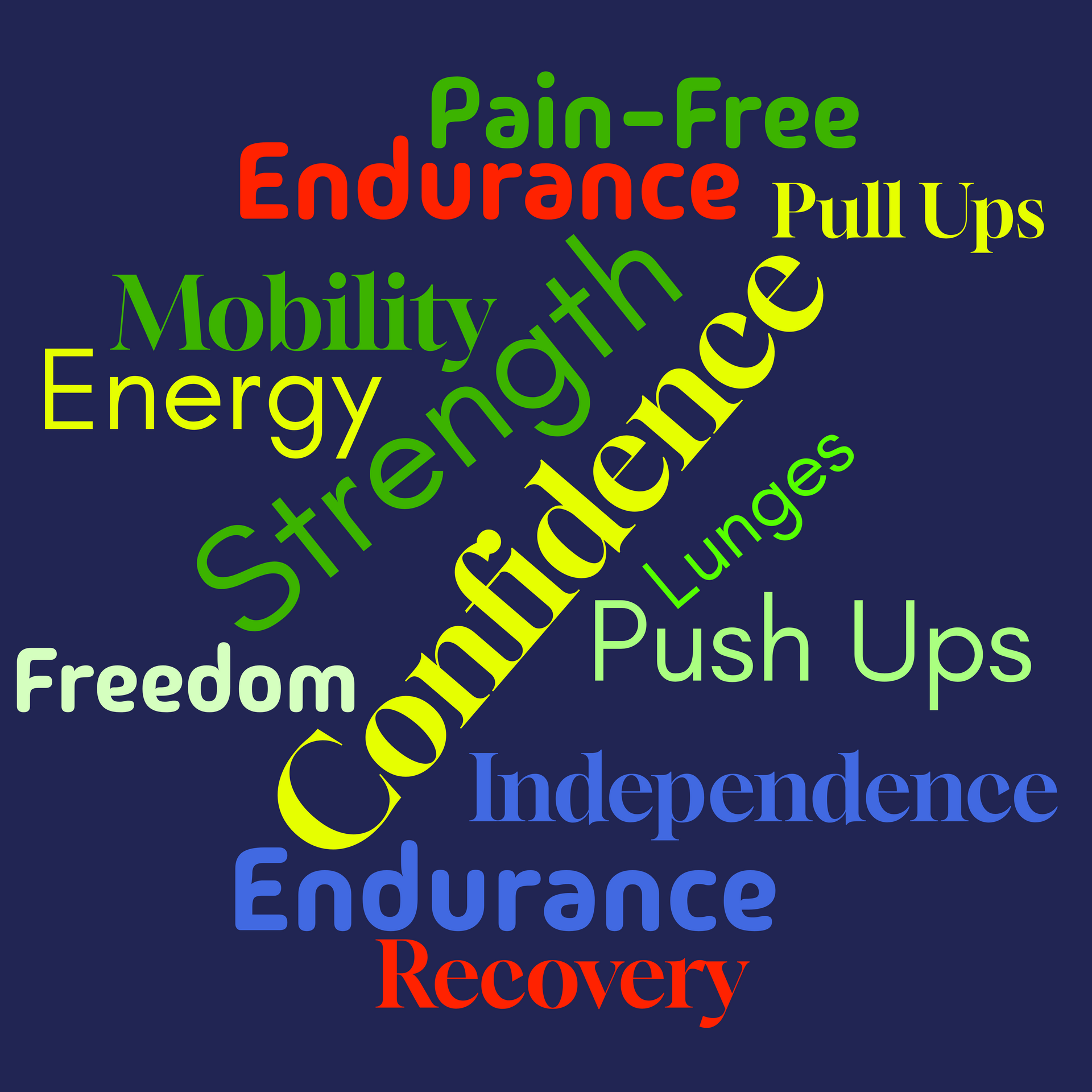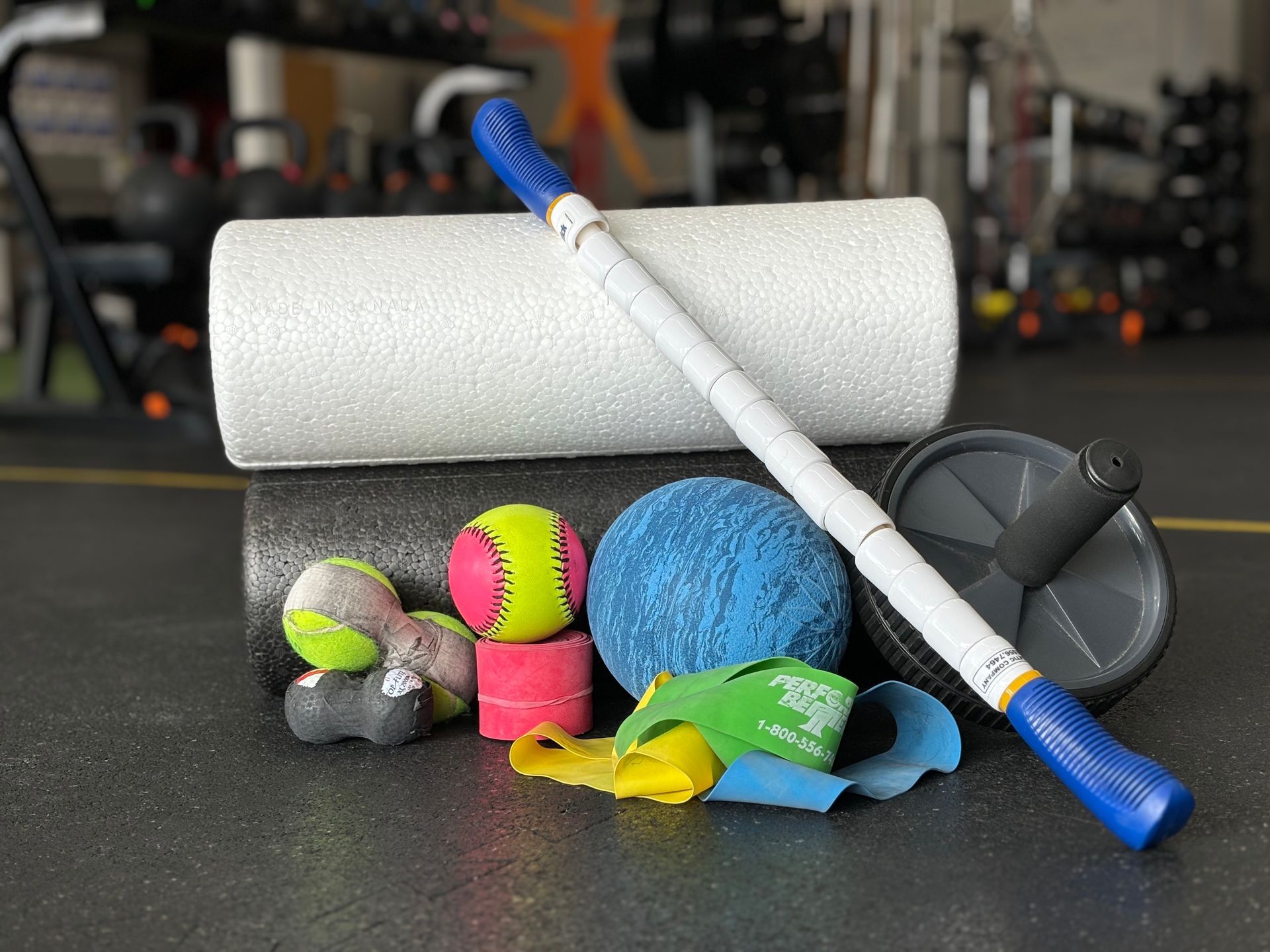Personal Training at Vitruvian Fitness Throughout the COVID-19 Pandemic

Update: February 14, 2022.
Click here for policy effective 2/14/22 for new current vaccination and mask rules.
Updated July 6, 2021
Vitruvian Mask Policy: If you have submitted proof of vaccination, you have the option to work out without a mask. If you choose not to submit proof, wearing a mask is required.
To submit proof, click this link to upload a photograph of your vaccination card. Upload your vax card photo here.
Most of the procedures and safety measures listed below are currently suspended. However, the possibility remains that we will have to bring any or all of them back depending on the status of the pandemic.
Plan Highlights:
- We wear masks while working out.
- All trainees are now separated by 10’x20′ clear vinyl dividers.
- We are running a 5,000 cfm air purifier to aid in the removal of all air contaminants.
- Weather permitting, all doors are wide open with fans directing airflow from one end and out the other.
- 10-minute gap between sessions for cleaning and additional fresh air exchange.
- All contact surfaces (equipment, floors, high-frequency touch surfaces) are sanitized using an EPA Registered antibacterial, virucide, mildew-stat, deodorant, and detergent solution that kill SARS-CoV-2, MRSA, Staph, HIV, and more.
Vitruvian Fitness is currently open for in-studio personal training only. We have made significant changes to almost every aspect of the training experience.
The guiding principle as we developed these changes (and update them as often as new scientific data if available) is one very simple question we continue to repeat over and over: Is it safe?
The follow up to that question is equally important: Do you feel safe?
The Colorado Department of Public Health and Education (CDPHE) and Jefferson County Public Health (JCPH) have published specific guidelines for Personal Services under which Vitruvian Fitness falls. Personal Training was permitted to begin again effective May 9, 2020. We have taken that guidance and applied it to our training studio.
The outline below contains highlights from the plan we have put together. This plan is still being fine-tuned and will be updated as often as new information and improvements to best-practices are learned.
Schedule
- Personal Training in studio is limited to groups of 5 trainees plus 1 trainer.
- Your training appointment will be for a 50-minute block of time. Your workout will be modified if necessary so you can complete the bulk of it within 45 minutes. The remaining 5 minutes are reserved for clean up.
- At the end of your 50 minute appointment, you must leave your workout space so we can prepare it for the next appointment. (You don’t have to leave immediately – just vacate your station so we can spray it down and prepare it for the next person.)
- There is a 10-minute gap between scheduled appointments to maintain distance between overlapping workouts, exchange the air in the studio, and to sanitize the floor.
Procedures
- Everyone who enters the studio (staff included) makes a declaration of health and takes their temperature. The declaration is simple: you are symptom-free, you’ve not knowingly been exposed to the virus in the past 14 days, and you’ve been respecting the safer-at-home guidance in all other areas of your life.
- To be clear, this declaration also means that you wear your mask whenever and wherever you are indoors with people other than the ones you live with – not just at Vitruvian Fitness – everywhere.
- Everyone brings and wears their own fabric masks that cover nose and mouth. If you forget yours, we will give you one. Bandanas and buffs are discouraged. Multiple layers of dense-weave cotton is terrific.
- Everything you need is in that station – foam rollers, mini-bands, yoga blocks, dumbbells, barbells, kettlebells, stability balls, TRX . . . If you need something that’s not there, we will get it for you.
- Every trainee will do a quick wipe of the things they are about to use and a thorough wipe of everything they touched when they’re done.
- Cardio-vascular exercise is limited indoors but can be done outdoors.
Facilities
- All the doors will be open – weather permitting. The heat and air conditioning will be OFF. Dress accordingly.
- As of 11/9/2020, we have activated an enormous air purifier that purifies the air at a rate of 5,000 cubic feet per minute. Weather permitting, we will still leave the doors wide open.
- Self-Contained Workout Stations are separated by 10’x20′ clear vinyl partitions. That will be your home for the duration of your workout.
- SCWSs are abundantly large and physically separated by partitions. When you are in the middle of your station, there is a physical barrier between you and the trainees next to you.
- Hand sanitizer, spray sanitizer, sanitizing wipes will be available within arms-reach.
- Bring your own workout towel and take it home. (Use it on your own body, not the equipment you touch).
- The bathroom with the shower is closed.
- The bathroom in the main room is available if you need it but you’ll have to wipe down when you’re done and that will cut into your time. So, try to take care of your business before you arrive.
Private One-on-One Training
Private Training sessions and new-client intakes and assessments are scheduled on a case-by-case basis. We do not have a set schedule for these but we will make accommodations one at a time.
Group Exercise Classes
As of 11/9/2020, in-studio group exercise classes are cancelled until further notice. We still have indoor cycling on Zoom. Check the class schedule for up to the minute information.
Membership Options
Check here to see what our current membership options are.
CDPHE and JCPH Guidance
Here are the links to the guidance from the CDPHE and JCPH:
https://covid19.colorado.gov/safer-at-home/safer-at-home-personal-services
https://covid19.colorado.gov/safer-at-home/recreation
https://www.jeffco.us/DocumentCenter/View/21570/SaferAtHome_Guidance1Pager_PersonalServices?bidId=
Questions or Comments?
If you have questions, concerns, or comments, please feel free to call or email. We’ll do our best to answer.
Thank you.
You might also enjoy these posts . . .







